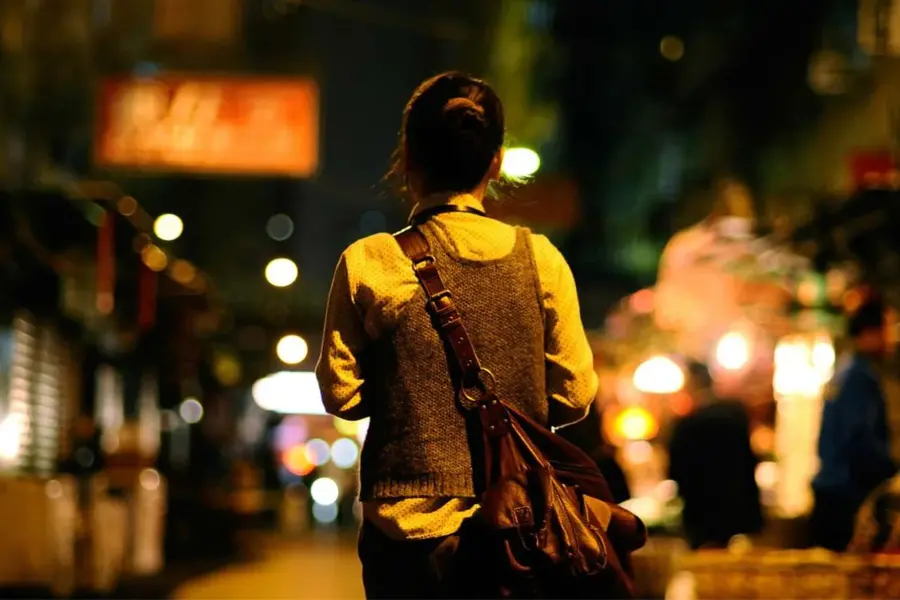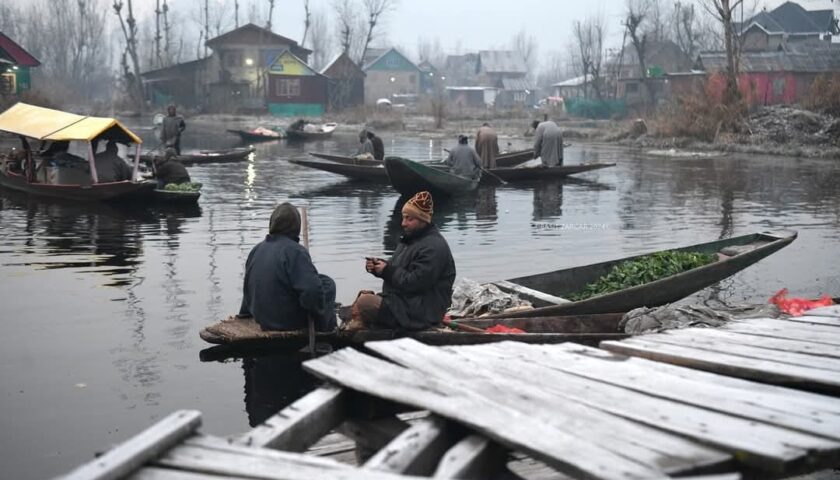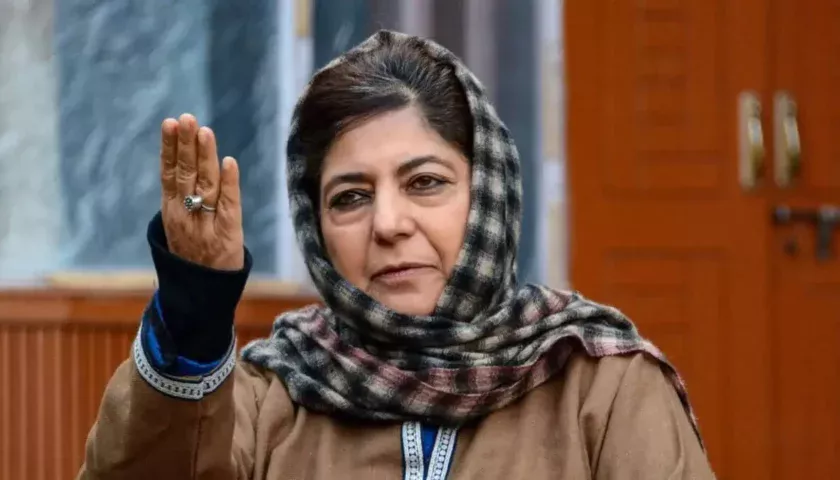A Stark Wake-Up Call; Why Srinagar is Ranked Among India’s Least Safe Cities for Women
By: Javid Amin | 28 Aug 2025
The release of the National Annual Report & Index on Women’s Safety (NARI 2025) by the National Commission for Women (NCW) has once again brought India’s women’s safety crisis into sharp focus.
Despite rapid urbanization, technological growth, and rising awareness of gender rights, India’s metropolitan and Tier-2 cities continue to struggle with basic guarantees of safety for women.
The findings are alarming: Delhi, Faridabad, and Srinagar have been ranked among the least safe cities for women, alongside Patna, Jaipur, Kolkata, and Ranchi.
For decades, women have raised concerns about harassment on streets, in workplaces, and within institutions meant to protect them. The 2025 index confirms that safety remains one of the biggest barriers to women’s full participation in public life.
Key Findings from NARI 2025 Report
1. National Safety Benchmark
-
The NCW survey set 65% as the benchmark score for women’s safety across Indian cities.
-
Only a handful of cities crossed this benchmark, indicating deep structural issues nationwide.
2. Women’s Safety Perception
-
40% of women reported feeling “not so safe” or “unsafe”.
-
Neighborhoods (38%) and public transport (29%) were flagged as harassment hotspots.
-
Vulnerability at nighttime was universally higher—even in cities considered relatively safer during the day.
3. Workplace Reality Check
-
91% of women felt generally safe at work, but the real concern was policy awareness:
-
Over 50% did not know if their organization had a POSH (Prevention of Sexual Harassment) policy.
-
Only 25% trusted authorities to act on safety complaints.
-
4. Bottom-Ranked Cities (Safety Perception Scores Below Benchmark)
-
Delhi
-
Faridabad
-
Srinagar
-
Patna
-
Jaipur
-
Kolkata
-
Ranchi
Why Delhi, Faridabad & Srinagar Rank So Low
1. Weak Institutional Responsiveness
-
Women reported low trust in police, municipal bodies, and workplace authorities.
-
Delayed responses to harassment complaints create a sense of fear and futility.
2. Entrenched Patriarchal Norms
-
Victim-blaming, honor-linked restrictions, and deep-rooted gender biases reinforce unsafe environments.
-
Women often self-censor their mobility—avoiding certain areas, times, or even career paths.
3. Urban Infrastructure Gaps
-
Poor street lighting, limited CCTV coverage, overcrowded buses, and unsafe last-mile transport compound risks.
-
Cities like Delhi and Faridabad still lack women-centric infrastructure despite years of policy debates.
4. Socio-Political Context in Srinagar
-
In Srinagar, the mix of conflict dynamics, security lockdowns, and weak civic accountability creates additional hurdles.
-
Women face dual insecurities: conflict-related restrictions and gender-based harassment.
Case Study: Delhi – The Capital Paradox
Delhi has long been labeled as the “rape capital” of India, despite continuous police reforms and campaigns.
-
Public Transport Fear: DTC buses and even Metro stations reported 29% harassment incidents.
-
Nighttime Movement: Women restrict mobility after 8 PM in several neighborhoods.
-
Policy vs Reality: Despite “Nirbhaya Fund” allocations, lack of effective implementation plagues Delhi.
Case Study: Faridabad – Industrial Growth, Safety Decline
Faridabad, an industrial hub in NCR, reflects the urban-rural contradiction.
-
Unsafe Transit: Women traveling to factories, offices, and universities report unsafe last-mile connectivity.
-
Workplace Gaps: Small industries often lack formal HR and POSH policies, leaving women vulnerable.
-
Societal Pressure: Conservative social structures discourage women from reporting harassment.
Case Study: Srinagar – Between Conflict & Gender Safety
Srinagar’s ranking reflects its unique challenges:
-
Conflict Zone Burden: Heavy militarization and curfews often restrict women’s safe movement.
-
Public Spaces: Markets, bus stands, and educational campuses report frequent harassment cases.
-
Silenced Voices: Many women refrain from reporting due to lack of institutional trust and family pressure.
Workplace Safety: The Hidden Gaps
The NARI report reveals that workplace safety is not only about physical security but institutional preparedness.
-
Most companies lack awareness campaigns about POSH laws.
-
Internal Complaints Committees (ICCs) exist only on paper in many small/medium enterprises.
-
Fear of stigma or job loss prevents women from filing complaints.
Women’s Safety Index 2025: Comparative Snapshot
| City | Safety Perception Score | Key Issues Highlighted |
|---|---|---|
| Delhi | 42% | Harassment in transport, weak law enforcement |
| Faridabad | 44% | Unsafe neighborhoods, lack of POSH awareness |
| Srinagar | 46% | Conflict + harassment, poor infrastructure |
| Patna | 45% | Street harassment, weak police trust |
| Jaipur | 47% | Tourist hubs unsafe, lack of night policing |
| Kolkata | 49% | Harassment in markets, slow redressal |
| Ranchi | 48% | Unsafe transit, patriarchal restrictions |
NCW Chairperson’s Statement
NCW Chairperson Vijaya Rahatkar underlined the broader vision:
“Safety cannot be seen merely as a law-and-order issue but as one that affects every aspect of a woman’s life—education, health, work opportunities, and freedom of movement.”
This statement highlights that women’s safety is not just about preventing crimes, but enabling equal opportunities.
The Bigger Picture: Why Women’s Safety Matters for India’s Growth
-
Education: Unsafe campuses discourage girls from pursuing higher studies.
-
Workforce Participation: Women’s participation in India’s workforce is just 24%, partly due to safety concerns.
-
Urban Economy: A McKinsey study suggests India’s GDP could rise by $770 billion by 2025 if women felt safe to join the workforce.
-
Tourism: Cities with unsafe reputations deter female travelers, both domestic and international.
Path Forward: Building Safer Cities for Women
-
Urban Infrastructure Reform
-
Smart lighting, safe transport, last-mile female-friendly auto/bus services.
-
Mandatory CCTV coverage in high-risk zones.
-
-
Institutional Strengthening
-
Fast-track courts for crimes against women.
-
Accountability mechanisms for police responsiveness.
-
-
Workplace Safety Enforcement
-
Mandatory POSH audits for all organizations.
-
Awareness campaigns for both employers and employees.
-
-
Cultural Change & Awareness
-
School and college-level gender sensitization.
-
Community-based neighborhood watch initiatives.
-
-
Digital Empowerment
-
AI-driven safety apps linked to police control rooms.
-
Public grievance dashboards for women’s complaints.
-
Why Srinagar is Ranked Among India’s Least Safe Cities for Women
Unlike Delhi or Faridabad, where women’s safety challenges are largely urban–infrastructure and governance-related, Srinagar’s low rank is shaped by a mix of conflict, governance gaps, and social pressures.
1. Conflict Zone Effect
-
Srinagar has lived through decades of insurgency, militarization, and security lockdowns.
-
This has created an environment where regular policing and civic accountability are often overshadowed by security priorities.
-
Women frequently face mobility restrictions, curfews, and checkpoints, making them vulnerable to both harassment and systemic neglect.
2. Weak Institutional Trust
-
The NARI report highlights that women in Srinagar have very low trust in authorities (police, local administration, or workplace redressal systems).
-
Under-reporting of harassment and assault is extremely high—cases either don’t reach the system or aren’t pursued.
-
Many women believe that filing a complaint may lead to social backlash or simply be ignored.
3. Public Space Vulnerability
-
Markets, bus stands, and university campuses in Srinagar were reported as harassment hotspots.
-
Public transport, particularly late evenings, is perceived as unsafe and unmonitored.
-
A large number of women self-restrict their mobility after sunset, cutting off economic and educational opportunities.
4. Patriarchal Norms & Social Stigma
-
Srinagar, like many South Asian cities, is bound by deep patriarchal norms.
-
Women are often discouraged from reporting harassment due to family honor concerns.
-
Survivors of harassment or assault face victim-blaming more than institutional support.
5. Workplace Gaps
-
While some larger institutions in Srinagar (like government offices and universities) have POSH mechanisms, many smaller businesses do not.
-
Awareness of workplace safety rights is much lower than the national average.
-
Women entering non-traditional sectors (media, tourism, IT) often face greater risks with fewer protections.
6. Double Burden of Insecurity
-
In Srinagar, women experience two layers of insecurity:
-
Conflict-related risks: lockdowns, surveillance, and limited public freedom.
-
Gender-based risks: harassment, unsafe public spaces, weak redressal.
-
-
This combination creates a unique vulnerability that pulled Srinagar down in the rankings.
What the Report Specifically Flagged for Srinagar
-
Only 46% safety perception score (against the national benchmark of 65%).
-
High harassment in public spaces (especially transport hubs).
-
Low reporting levels—one of the lowest among the 31 surveyed cities.
-
High nighttime vulnerability, even in central parts of the city.
-
Very low trust in complaint redressal (both police and workplace authorities).
Why This Matters
Srinagar’s inclusion is not just about crime statistics—it’s about the lived reality of women in a city that faces both political conflict and gender inequality.
It shows that safety isn’t only about policing but also about:
-
Social attitudes (patriarchy, stigma)
-
Governance gaps (weak complaint systems, low trust)
-
Urban design (poor lighting, unsafe transit)
-
Conflict context (restricted mobility, insecurity)
In short: Srinagar made it to the least safe list because women there face unique compounded insecurities—conflict dynamics, weak institutions, unsafe public spaces, and entrenched patriarchal norms.
Conclusion: Women’s Safety as India’s Litmus Test
The Women’s Safety Index 2025 is not just a report—it is a mirror to India’s urban conscience.
That Delhi, Faridabad, and Srinagar—three cities with very different contexts—rank at the bottom proves that women’s safety is not about geography but about systemic gaps, governance failures, and cultural norms.
Unless India treats women’s safety as a development priority, not just a crime statistic, true empowerment will remain a dream.
The path forward requires infrastructure, institutional reforms, workplace accountability, and cultural change—only then can Indian cities truly be called safe.




